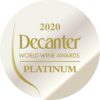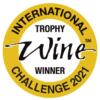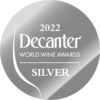Category: Uncategorised
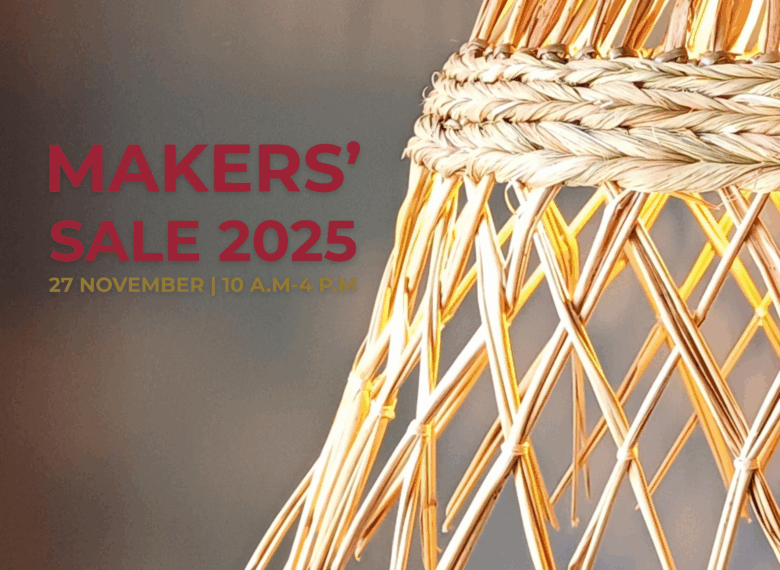
The Makers’ Sale 2025 – Thursday 27th November
We love getting together with other people who also make fabulous things and this year we have 18 new Makers along with our regular favourites.
Art, books, brocante, ceramics, clothes, vintage textiles, baskets, bags, candles, organic sausages, belts, jewellery, t-shirts… along with a liberal sploosh of olive oil, cordials, honey, bath oils, wine and other delicious Christmas essentials.
There’s Coop’s pop-up cafe for lunch, Hannah’s van for coffee and cake and, of course, our Land Rover fizz bar.
We will be welcoming our marvellous makers at The Grange Winery on Thursday 27th November between 10am & 4pm
Entry is free but we will be taking donations for Allegra’s Ambition on the door. This wonderful charity aims to enable, engage and empower young, disadvantaged people to fulfil their potential through participation in sport and outdoor activities.
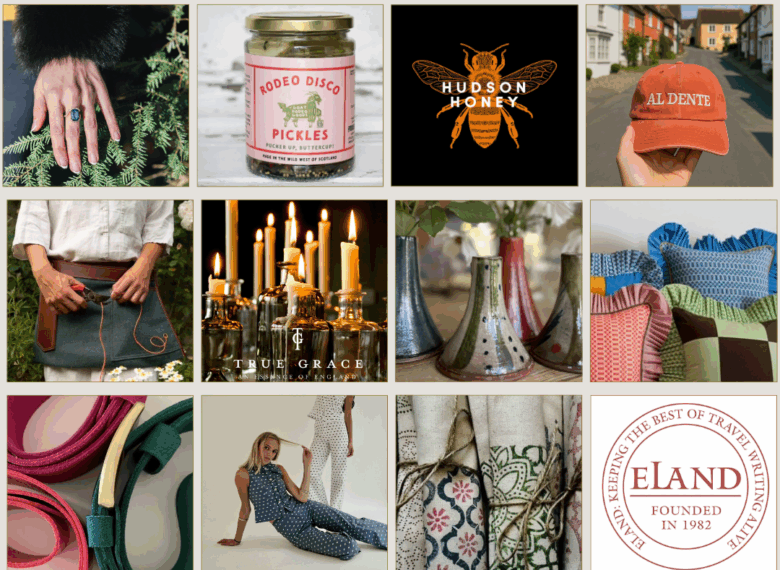
Take a look at the names joining us for this year's curation:
Nick McMillen - Bark weaving and botanical charcoal drawings that unveil the hidden wonders of the woods.
Mollie McMillen - Contemporary Basket Maker and Willow Weaver in Hampshire. Specialising in woven fence panels, garden arches, coffins, baskets, and seating restoration.
True Grace - Hand-poured scented candles, made using renewable vegetable and natural waxes.
Mariana London - Luxury artisan soap, bath oil, body butter, reed diffusers and other bathroom gifts, handmade in small batches.
Lucia Constant - Handmade ceramics.
Beyond the Barn - Floral design studio offering wreaths and seasonal displays.
Sarah Tyssen - Woven textiles, scarves, blankets and journals.
The Stores - Sustainable homewares, clothing, preservatives and beautifully curated offerings from the brilliant Hambledon store.
Fine Fettle - Elderberry Syrup
Acre & Holt - Tweed clothing and accessories for gardeners and people who live, love and work outdoors.
Forget Me Not London - Nightwear, dressing gowns, kaftans, pyjamas, bags.
Two & One -Authentic and healthy olive oil crafted by British hands in Spain.
Bespoke Block Printing - Block-printed textiles
Fifi Leuchars - Decorative antiques and objets.
Louise Brown - Willow weaving and baskets.
Silo Studio - Design studio consisting of Hannah’s artwork as well as homewares. Cushions and ceramics.
Faite Design - Hand-embroidered t-shirts and clothing.
The Silk Road - Vintage coats and stunning textiles.
Jonathan Garratt -Terracotta plant pots, sculpture and glazed slipware from local clays.
Augustine Jewels - Successful British luxury jewellery brand now sold globally.
Maiden T Shirts - Original t-shirts with printed designs.
Noble & Stace - Hampshire chocolatiers - truffles, tablettes and choclates. Perhaps some even containing our wines...
Ant Elias - Hand-crafted and tailored womenswear designed in UK and using the craft, fabric and technique of Lebanese artisans.
Eliza Beatrice London - Leather belts in brilliant designs and colours.
Eland Books - An unrivalled collection of books about the world and its societies. Keeping the best of travel writing alive.
Rufena - Italian olive oil
The Hudson Honey - Delicious jars of local honey.
The Grange Wild Venison - Organic wild venison sausages from The Grange estate.
Islands Chocolate - Truly delicious and ethical cocoa products. Chocolate buttons, spreads and cocoa powder. Stocked in Fortnum & Mason.
“No Name” - Selection of waistcoats handmade in Pakistan.
... and a few more purveyors of all things home and handmade.
See you on the 27th November!
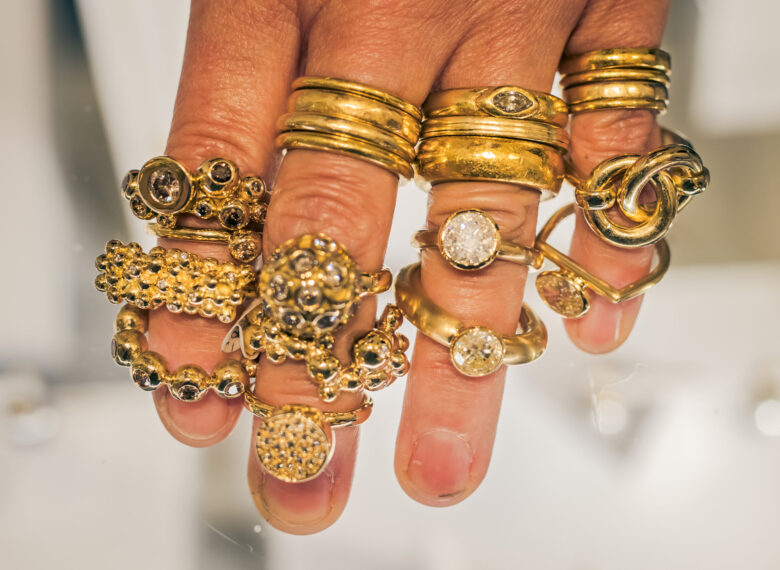
A Gilded Partnership – The Grange x The Goldsmiths’ Fair 2025
In 2024, The Grange were very proud to enter into a partnership with The Goldsmiths’ Company to become the official English sparkling wine of the Company and Goldsmiths’ Fair.
Every autumn, Goldsmiths’ Fair brings together a curated selection of the UK’s best contemporary jewellers and silversmiths. Each exhibitor has a unique approach to working with precious metals, fusing techniques and inspirations in innovative ways. Together, their work demonstrates the breadth and depth of talent in precious metalwork in the UK today.
With this year’s event now coming up, it seems the perfect opportunity to shine a spotlight on the dazzling event and encourage you all to grab a ticket. We are delighted to be able to offer you these at 50% off by entering this code at checkout – Grange50
Week One: 23rd -28th September | Week Two: 30th September – 5th October
50% OFF TICKETS with code Grange50 – Goldsmiths’s Fair Tickets 2025
For more than 40 years, Goldsmiths’ Fair has provided private collectors, international museums and world renowned collections with the opportunity to see, try, and buy pieces from the most talented independent silversmiths and jewellers working in the UK today. The Fair gives visitors the opportunity to buy directly from makers and to discuss their skills, practices and inspirations, accompanied by a dedicated talks programme and exhibitions.
From last year, we were proud to be able to share this space with all of the amazing makers serving our CLASSIC NV from THE GRANGE bar.
An altogether felicitous pairing of sparkling wine and sparkling jewellery.
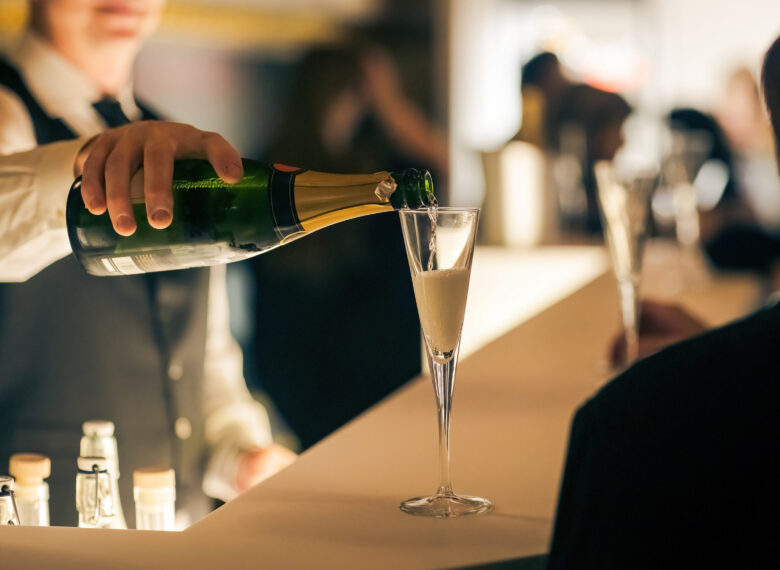
The Goldsmith's Fair is the leading selling exhibition of contemporary jewellery and silver made by more than 130 of the most talented craftspeople working in the UK today and is held over two weeks every autumn in the beautiful Goldsmiths' Hall, London, with exhibitors changing between Week One and Week Two. It serves as a platform for the launch of new work within the jewellery industry, with curated selections and awards for innovative and exciting creations.
It is also a supporter of emerging talent, highlighting The Emerging Business Bursary Scheme which was created to celebrate and nurture talent in the design and making of jewellery and contemporary silver. Goldsmiths’ Fair 2025 has 10 Bursary stands available for emerging makers who may not have access to university education or indeed would previously not have qualified due to age-related parameters.
Of 2025’s 136 exhibitors, there will be 15 craftspeople that will be exhibiting at Goldsmiths’ Fair for the first time: 5 new exhibitors and the 10 makers that form the second ever cohort of the new Emerging Business Bursary scheme:
Emerging Business Bursary Recipients 2025
Lucy Anderson | Isabella Bedlington | Monica Findlay | Wenyin Jiang | Liu Yang | Alice Biolo | Emma Lawrence | Francisca Onumah | Alewijn Slingerland
The Goldsmiths’ Company
The Goldsmiths’ Company is a cultural institution and membership organisation – one of the Great Twelve City of London Livery Companies. The Company advances the trade and craft of silversmithing and jewellery through training, exhibitions and fairs, operates the London Assay Office which protects the trade and consumers by testing and hallmarking precious metals, and works with charitable, educational, and cultural partners to improve life chances for people.
Established in 1327 and now with over 1500 active members the Company has contributed to national life for eight centuries. In 2027, it will celebrate it's 700th anniversary.
Here is the link to book your tickets - Goldsmiths's Fair Tickets 2025

THURSDAY LATES 2025
Every Thursday from May 22nd – September 11th, 5:30pm – 8.30pm, The Winery, Alresford Road, Itchen Stoke, Alresford, SO24 0QW
Running every Thursday evening from May 22nd, throughout the summer and into September, we will be bringing the bar built into our 1982 Series III Lightweight Land Rover out under the canopy of the winery for a gentle evening of sunset watching… The Landy will be filled with our award-winning wines, all chilled to the perfect temperature and available to buy by the glass, bottle or case.
Just turn up, take a seat at one of the tables and keep hunger pangs at bay with food from a selection of BBQ from the best local cooks. The brilliant Becka Cooper (who caters to the thousands at The Grange Festival) will be starting us off, with game from the estate, Worthy Earth salads, delicious sauces along with some lighter snack options. The roster thereafter includes Forte Kitchen, Hampshire Pantry, Comanche BBQ and The Grange Hampshire's very own Baring brothers pizza, spun and delivered by Fred and Paddy! Follow @thegrangewine on instagram to discover which of these culinary genii will be with us when…
It’s first-come, first-served - so when the food is gone it will be gone…
JULY
3rd July - Hampshire Pantry (Tacos)
10th July - Forte Kitchen (BBQ skewers)
17th July - Becka Cooper (BBQ Game Buns + Salads)
24th July - The Grange: Baring Bros - Pizza
AUGUST
7th August - Becka Cooper
14th August - Forte Kitchen
21st August - The Grange: Baring Bros
28th August - Hampshire Pantry
SEPTEMBER
4th September - Forte Kitchen
11th September - Becka Cooper
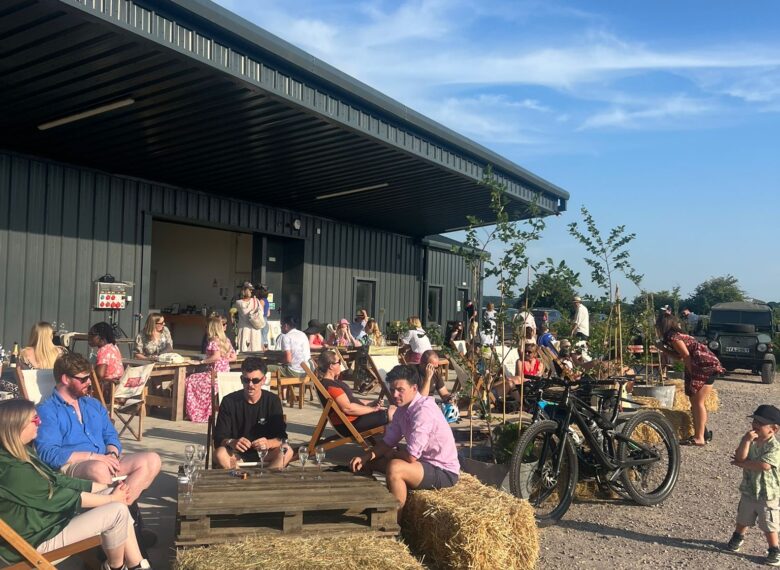
We started Thursday Lates in August last year as a way of showcasing our wines to any one with a half hour to spare but it quickly grew to be a popular place for friends to meet for a quiet evening. It‘s rustic - hay bales, fire-pits, pallet tables and deck chairs sheltered from any shower (heaven forbid!) by the canopy of the winery and bathed in the golden light of the sinking sun, setting the dark steel of the winery ablaze…
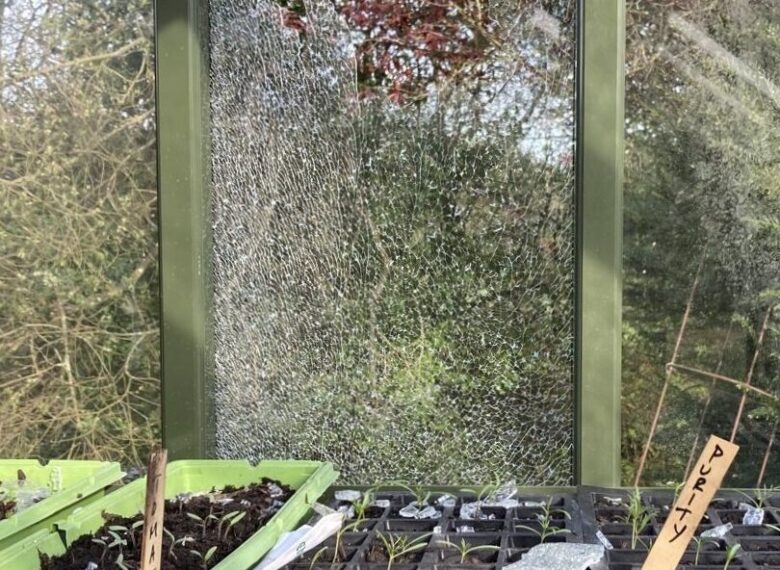
The wine widow on being practical, shattered greenhouses and the ‘f’ word (April/May)
I have only done one really practical thing in my life which is when I sucked a Hama bead out of our son’s left nostril using a straw. He was 2. That I mention this quite often, 19 years later, is because that Hama bead is my proudest moment as a mother, a little beacon of common sense in an otherwise pretty arid landscape, which may explain why I thought a bird had crashed into the greenhouse and a vandal had sprinkled concrete powder around the veg beds.
When I noticed that the tomato and salad seedlings were covered in shards of glass, it took me a moment to look up and realise that the end of the greenhouse looked like an old fashioned windscreen, shattered from top to toe.
Shards of glass continued to drop as I moved around so I went outside to look for a potential culprit - a dead bird on the ground. I walked round paths that were peculiarly greyish white. On closer inspection I identified a layer of dandelion fluff such as I’d never seen. I sent photos to Zam. Willow he declared. And the greenhouse… well it was possible that a tiny stone had been thrown up by his mowing, unnoticed by us the evening before but creating a dink, which later shattered.
I was incredibly nice about it. Because just for once ….
It has however left the seedlings we are not going to eat - the salad and tomatoes have been binned - vulnerable to frost. And it’s all about the F word this week because following that little heatwave, the temperature is falling and a polar air mass is coming. As he keeps saying while watching the weather app 24 hours a day. I wouldn’t dream of mentioning the tomatoes.
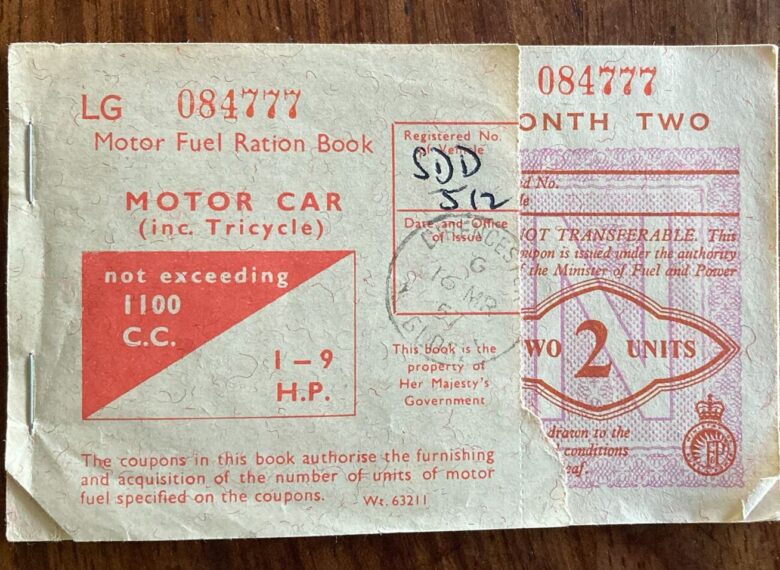
The Wine widow on house clearing, lost letters and vinegar wine (March/April)
We are clearing out my mother’s house … a desk full of blue Sellotape tins that now hold bent paper clips and desiccated rubber bands. There are photographs of people we can’t identify, ration books, her school certificate, unfinished rolls of tapestry, incomplete sets of playing cards, discoloured bits of tissue paper. That’s just the top drawer. We have filled three skips from the cupboards and when we began we dithered over what to chuck but now, now we’re getting pretty ruthless.
Although I find it incredibly hard to throw anything with human handwriting on it, including pocket diaries from 1983 in which my father itemises every expense (“fuel £10.20, parking 10p”) and their address book which has been by the telephone as long as I can remember. An address book. Imagine.
As we were preparing to throw this leather volume away, a letter fell out. I have no idea who it is from as I can’t read the signature but it is a thank you letter for lunch. On the second page it says “Finally, I am so sorry for what my father did on Sunday.” There is more. “Chuck”. Says my sister. I’ve brought it home. I’m going to try to track the letter writer down.
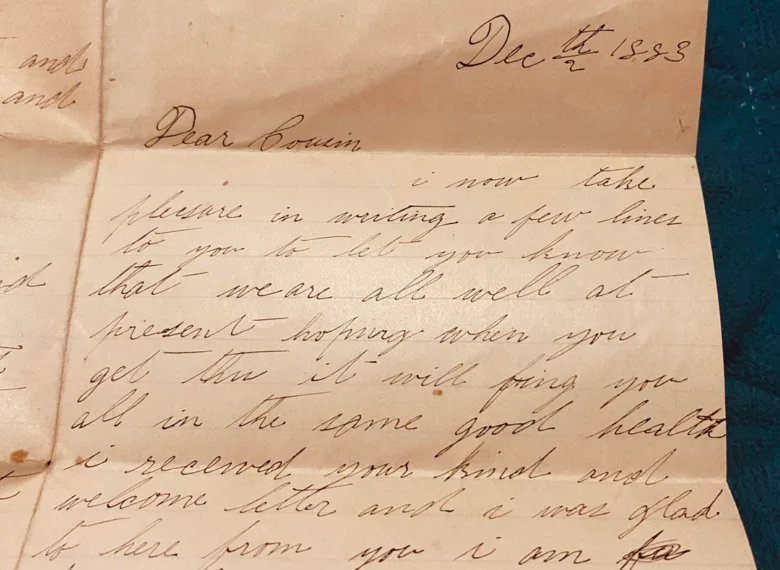
And then we tackled the larder … and the wine. I took about 11 bottles of white wine home. These have price tickets in francs and lire so I can see they were cheap in the first place. They have not stood the test of time and of the 5 we have opened, 5 have been poured down the sink. Zam says he’ll use the rest for vinegar. My mother would approve. She never threw anything away.
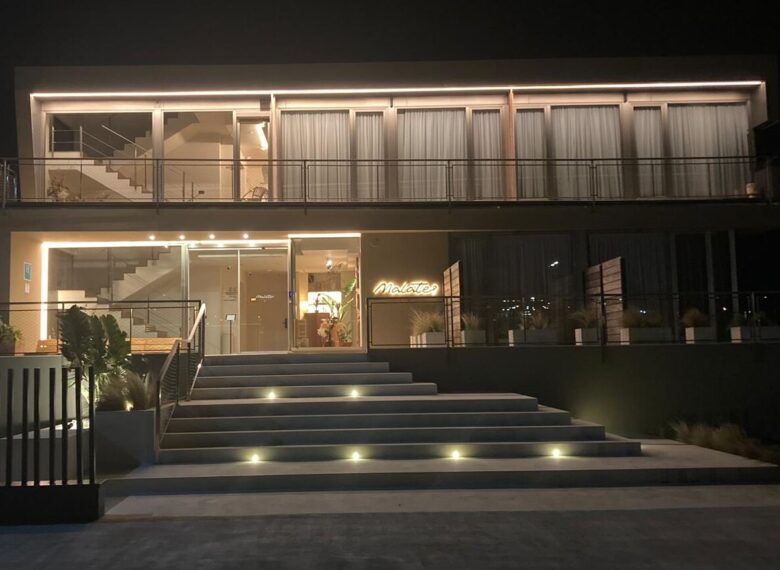
The Wine widow on pinxtos, ghost hotels and washing windscreens (February/March)
We adapted to the Spanish hours pretty easily – lunch at 3 and dinner at 10 – until last night when it all seemed to catch up with us and we bought queso and jamon in a supermarket before retreating to our hotel room to watch Netflix. We have covered 1000 miles in 5 days including a drive to the top of the Picos Europas that had even Zam, an unflappable driver, gripping the steering wheel as we squeezed past oncoming cars on hairpin bends with a substantial drop on the driver side. The driver being on the wrong side, as it were. Booking hotels as we go has born some surprises including a hotel in which we were the only guests. Provided with a door code via WhatsApp it was like arriving at a ghost hotel – very comfortable but definitely eerie. We went to the nearest town for food where the waitress tried to explain that we were having potatoes with potatoes as we made our pintxo choices but we took no notice and downed a couple of glasses of Albariño. With 2 plates of potatoes. An elderly couple wandered in with a dog the size of a donkey. They sipped coffee and exchanged not a word but stared at their dog whose bouffant hair was so beautifully coiffed that I stared at it too. It sat as still as a statue, quite used to being stared at.
Back at the ghost hotel the wind roared round our window and I thought I could hear footsteps on the balcony that overlooked a slightly spooky estuary. In the morning I was surprised to smell coffee. I descended to the basement, lured by this delicious scent but half wondering if it was in my imagination. And there was a very elegant woman welcoming me to the best breakfast of the trip and the whole experience became even more baffling.
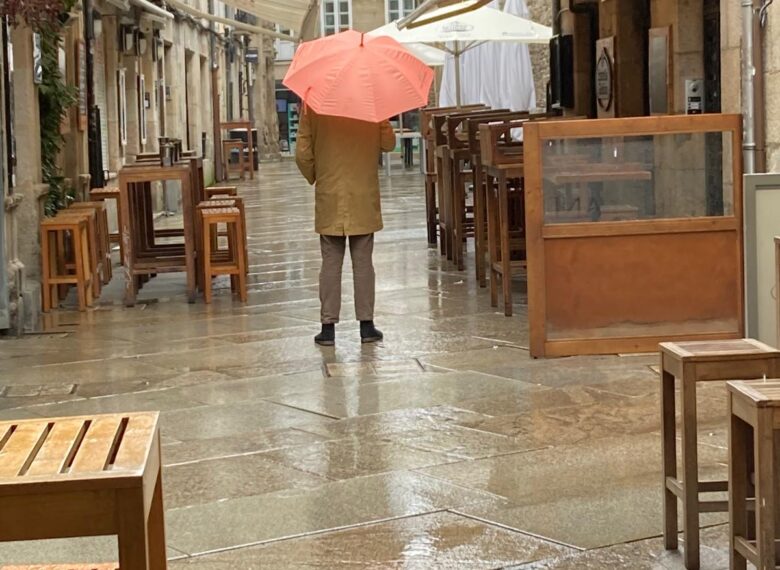
Then the rain came down … torrential rain… as we headed towards Vigo. Unable to see much out of the filthy windscreen, Zam pulled over and got his shampoo out of the boot in order to clean it. His familiarity with this procedure leads me to think he does it quite often. Tomorrow we visit a winery, the first and I think only one which is a good thing. I mean obviously I love a winery, but one is enough. As I told the driver.
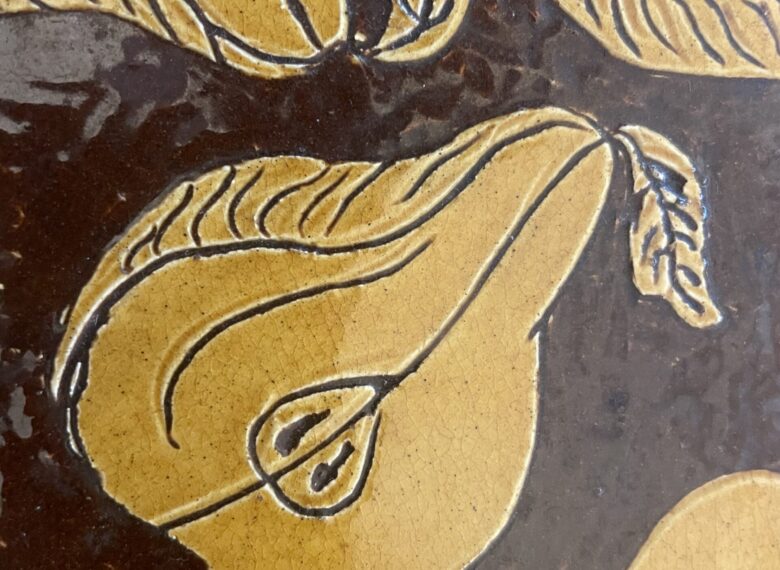
The Wine Widow on fruit, theft and varifocals
“A man watches his pear tree day after day, impatient for the ripening of the fruit. Let him attempt to force the process, and he may spoil both fruit and tree. But let him wait, and the pear at length falls into his lap.” Except Abraham Lincoln didn’t live where we do.
We have a pear tree growing, espaliered, against the side of our cottage that faces the lane. We planted it five years ago and Zam has pruned it beautifully. We love the blossom. We love the shape. And we love the pears which we watched, as Lincoln suggested, without rushing them but going out each morning for a gentle squeeze, waiting, waiting. Still not ripe we mutter before coming inside for coffee. And then … oh then… we go outside one morning and every single one of the seven beautiful pears has gone. Overnight. Not a shred of evidence to show they ever existed.
Squirrels? Seven? Or a random act of theft which in this case I would call vandalism because, BECAUSE, they weren’t YET RIPE.
I stare at the denuded tree through my new glasses which are varifocals and which are causing me some issues. My legs seem to be about 6 inches long, depending on how I tip my head. Escalators are a terrifying hazard. On Monday I smiled warmly at a vicar coming towards me in a London venue where I was waiting to see my godson play drums in a band. I always smile warmly at vicars because I worry that nobody else does and I thought he might be feeling a bit out of place. As he came closer I realised that he wasn't wearing a dog collar but a small white goatee beard. And a black polo neck.
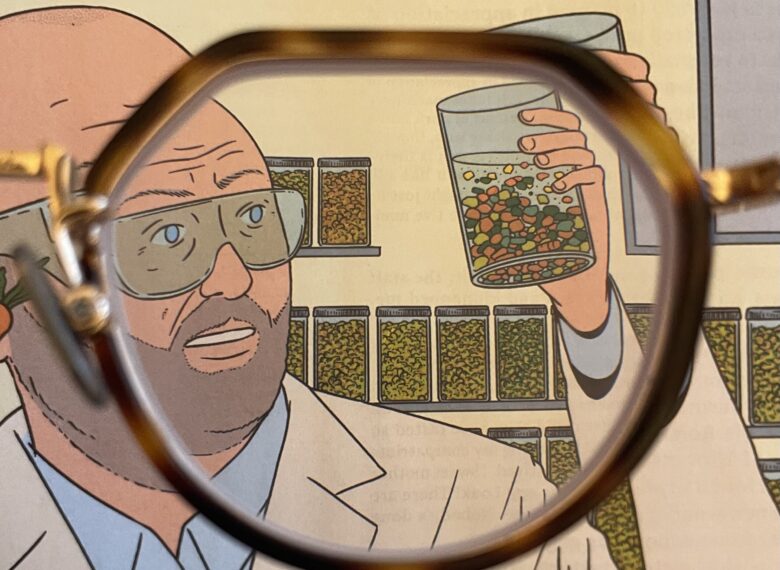
In the winery, I take care not to trip over the pipes and hoses that are in full use as the freshly picked grapes ferment and everything is continuously scrubbed to a spotless clean. I notice that a couple of deliveries have come back, one because it was the wrong item and one because a bottle of the new pinot noir was insufficiently wrapped. By me. I formulate excuses involving my new glasses but in the end, I just fall on my sword and wonder if, or when, I will be sacked.
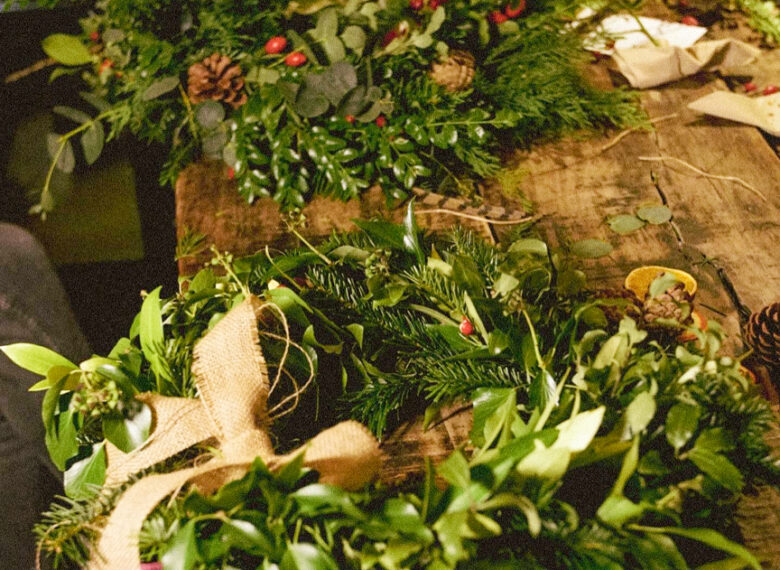
The Grange x Stem & Green – Wreath making workshop
Join us for a festive evening of wine and wreath-making at our state-of-the-art, working winery. A perfect workshop to do with friends or family in the build up to Christmas.
TICKETS – Stem & Green x The Grange
Friday 29th November, 6.30 - 8.30pm
Location: The Grange Winery, Alresford Road, Itchen Stoke, Alresford, SO24 0QW
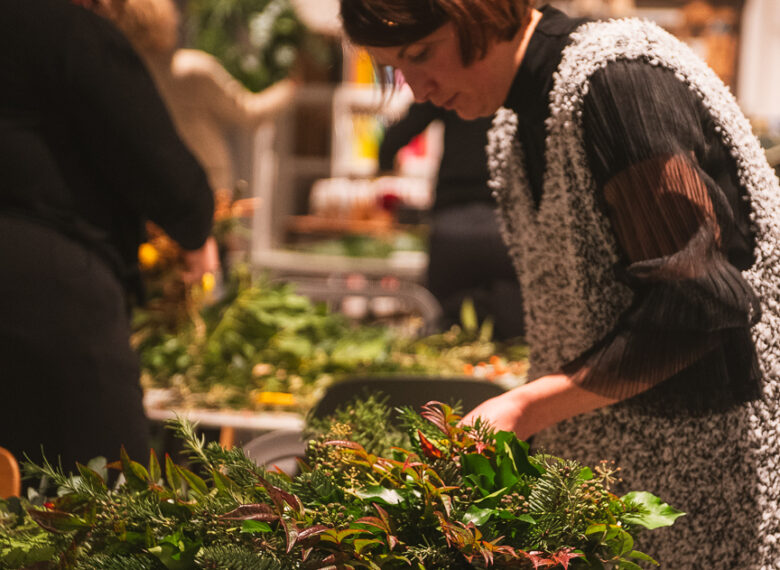
After a short demonstration, you’ll be given your own table as a group or family to have fun, get creative and make your very own fully natural wreath.
Your luxurious wreath will be 100% sustainable and completely biodegradable, made from locally sourced foliage, berries and dried flowers, a perfect Christmas decoration.
Alongside this wreath-making workshop, you'll get a mini-tour of The Grange Winery and a taste or two of The Grange wine to enjoy as part of your ticket. More wine will be available for purchase to fuel your creative flair.
Participants must be 18 or over to take part. All materials and scissors will be included, though you might like to bring your own apron and any of your own decorations which you might like to add.
Price includes VAT
£75 pp
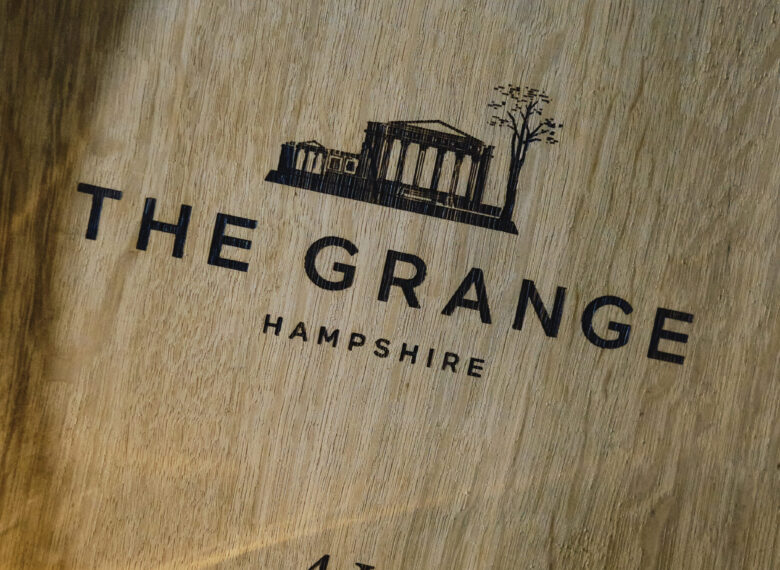
The Christmas Taster – Open Cellar Door 2024
Every Wednesday afternoon in December (and on the mornings of Saturday 21st December & Monday 23rd December 10am – 1pm), we will be swinging wide the winery doors to cater for your festive wine needs.
From 4pm - 7pm every week, all those who appear at the top of the track will enjoy a try-before-you-buy tasting of our wines in the company of Zam Baring, our founder and managing partner. Think Santa’s grotto but without elves, nor indeed a man with a beard…
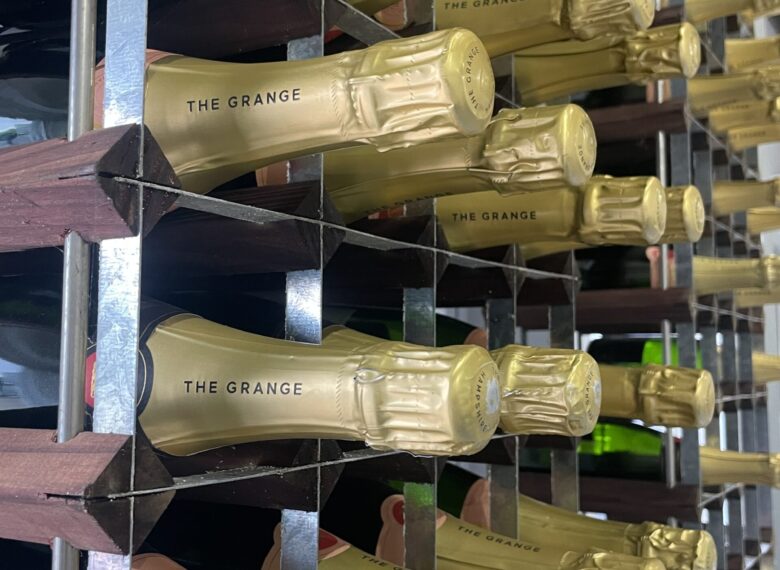
This is a marvellous opportunity for us to showcase our full portfolio of wines and for you to drive away with pretty much everything, from sparkling to still, that you might need for the big day and, indeed, the week thereafter…
You will taste our collection of wines in bottle and also in some of our magnificently festive-looking magnums!
CLASSIC
Only available in magnum due to unprecedented demand for bottles.
PINK NV
Our best kept secret, the most-awarded wine in our arsenal and Decanter 2020 Platinum medal winner.
WHITE FROM BLACK 2020
Awarded IWC 2024 gold medal
*NEW RELEASE* The WHITE FROM WHITE 2018
Blended from ultra-ripe chardonnay from the endless summer of 2018. Golden yellow in colour, luxuriously rich and toasty with aromas of baked orchard and citrus fruits, reminiscent of caramelised tarte tatin.
STILL PINK 2023
With juicy macerated berries and stone fruit on the nose, the palate is full and rich with more stone fruit and a hint of lychee before a very light spritz carries through to a distinctly dry and moreish finish. That’s the Boxing Day ham covered!
*NEW RELEASE* PINOT NOIR 2022
We made this from the magnificent 2022 Pinot Noir fruit imagining it would be something rather good to add to our sparkling PINK blend but, lo and behold, a delightful, albeit very light, cherry, blackberry and forest-floor flavoured PINOT NOIR for, might we suggest, your Christmas turkey? Just 11% alcohol too.
If ALL THAT wasn’t reason enough to pop by, we will also be working with local producers and suppliers to showcase their wares to add to your Christmas wish-lists each week. Keep an eye on our socials for more information. There will be special cellar door prices, promotions and merchandise to make the journey up the track worthwhile!
Choose The Grange for your all festive wine - The Grange Christmas case is the perfect selection of our still and sparkling wines!
Make sure you don’t miss this chance to visit the winery, meet the makers and taste the wines which will be proudly furnishing your Christmas tables and filling the glasses of your friends and your family all the way into 2025!
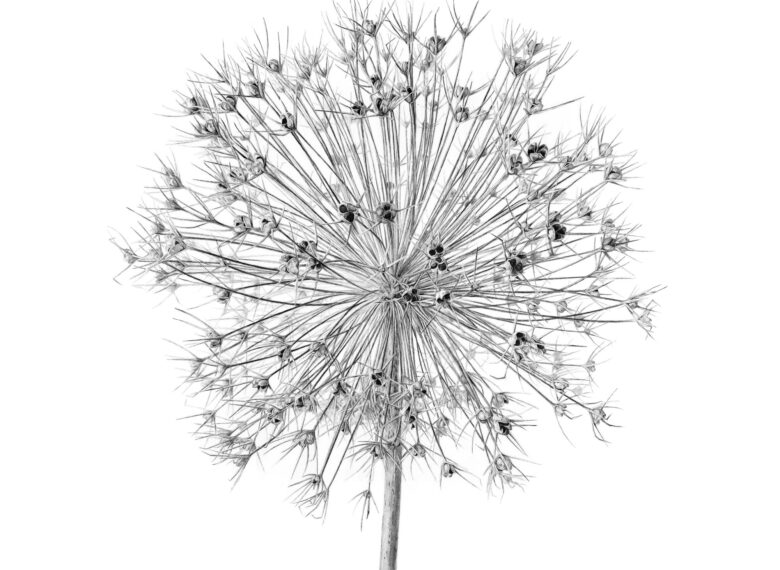
A Makers’ Sale of Work – Thursday 28th November ’24
After last year’s rip-roaring success, we are going again on the ‘Makers’ Sale of Work’. There will be a fabulous array of makers on show, each laden with beautiful things to sell.
We will be welcoming our marvellous makers at The Grange Winery on Thursday 28th November between 9am-3pm.
Entry is free and we will be taking donations for Allegra’s Ambition on the door. Allegra’s Ambition aims to enable, engage and empower young, disadvantaged people to fulfil their potential through participation in sport and outdoor activities.
You can expect hand-thrown ceramics, homeware, textiles, jewellery, art, books, bags, flowers, oils, baskets and, of course, wine! We will be selling The Grange wine and gifts from the Land Rover bar and you may just have a chance to taste The Grange's new wines before anyone else- The WHITE FROM WHITE 2018 and The PINOT NOIR 2022.
Becka Cooper is hard at work dreaming up some delicious food too.
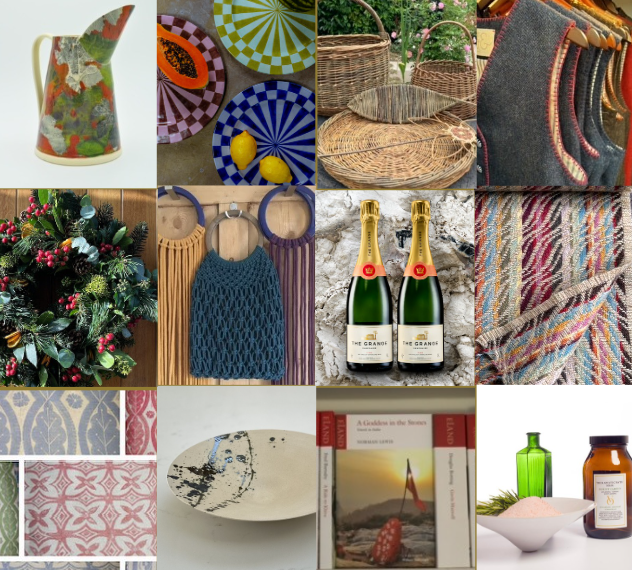
Our Makers:
Beautifully designed wool and Scottish tweed for women and men, proudly made in Britain. Waistcoats and trousers with perfect tailoring that never fails to flatter and everything so well made, it lasts forever.
@acre_and_holt
Design studio founded by artist and designer Hannah Watts. The studio consists of artwork, homewares and musings by the designer which draw inspiration from the culture, colour, energy and craftsmanship of Africa where she spent a lot of time travelling through the years. Bold, bright and beautiful.
@s_i_l_o_studio
Claire Ayeni
Claire worked for a couple of small fashion accessory companies before working on her own designs which combine her love of textiles and colour. Her contemporary handmade macrame bags and water bottle holders are designed to be both practical and fun.
@claireayeni
Exquisitely woven textiles in Australian Merino lambswool, Sarah produces subtly coloured scarves, shawls, blankets, cushions and other homewares designed on a 16 shaft Louet Megado dobby loom in her Surrey workshop, for production (mostly in limited editions of up to 12 of each colour) on a power loom in a Yorkshire mill.
@sarahtyssen
Izzy is a London-based potter working predominantly in stoneware on the wheel. Passionate about craftsmanship, each piece is designed with a focus on enhancing daily life and a belief that authenticity to material is integral to good design. All manner of stunning, candlesticks, bowls, vases, mugs and sets derived from classic forms with elegant handmade glazes.
@izzylettyceramics
Louise is a City and Guilds qualified basketmaker who shares her passion with others through teaching. Being a member of the Basketmakers' Association opened her eyes to the incredible diversity within basketry, both traditional and contemporary and she will bring a wonderful selection - plus you could sign up for her upcoming workshops.
@louisebrownbasketmaker
Francheska Pattisson
Francheska creates sublime ceramic artworks. She works mostly in white earthenware, both on the electric wheel and by hand-building. She states that surface is as important as form; the clay becomes the canvas. She applies colour in the form of slips and underglazes in multiple layers, combined with wax resist and scraffito.
@the_open_kiln
@francheskapattisson
Beyond the Barn is a florist based near Winchester in Hampshire. Jo and Ruth are creative friends who share one passion and who have combined their natural talents and their love of flowers for over 20 years. Wreaths, decorations and the best amaryllis we’ve ever seen.
@beyondthebarnflowers
Reema Pachachi became the first Creative Director of De Beers LV in 2001. Having had over 30 years experience in jewellery, she launched her own brand kuka-me. Gorgeous, easy-to-wear sterling silver and 18ct gold jewellery, particularly created for independent women with an individual sense of style.
@kukamejewellery
In her Sussex studio, Laura designs blockprinted linens, cottons and oilcloths - a little bit Bloomsbury but also very contemporary - in wonderful natural colours. Cushions, bags, wrapping paper and tea towels as well as fabric to order and incorporating designs by her daughter Maudie of fungus&mold.
@lauradelamare60
Victoria’s work is intuitive, holistic and smells utterly delicious. Exploring the ancient form of scent making led her to create four signature blends and a wide range of products including candles, bath soaks, soaps and natural perfume elixirs. Body balms, oils … and more.
@victoriaogilvyessence
Middlemarch Fine Art specialises in the work of mid to late twentieth-century British artists and will be bringing a small selection of works including Tessa Newcomb, Elisabeth Frink and Mark Hearld.
@middlemarchfineart
Camilla Dinesen Jewellery
Danish jeweller Camilla Dinesen was a part of the creative crowd that birthed the movement of Young British Artists in the nineties. Today she is working out of her studio in the countryside near Winchester with clients who love her quirky somewhat schizophrenic (her own words) style that somehow combines architectural with organic in silver, gold and white gold.
@camilladinesenjewellery
Having worked in the textile design industry for over 20 years Liz McKenzie decided to explore other creative avenues, drawing on that background to develop a ceramic style that echoes her love for colour and texture in a wide variety of forms with wonderfully diverse outcomes.
@lizzallmakes
Eland has the largest list of classic travel books in the world. They currently sell 175 titles and are beginning to feel confident that wherever you travel, or are passionately interested in, there will be an Eland title to expand your horizon. Barnaby will not be able to bring the full list … but a very good selection.
@elandpublishing
Rebecca Wordsworth works solely with porcelain, in all it’s unpredictable glory. She immortalises seasonal hedgerow flowers by hand-pressing them directly onto the clay and sparingly applies gold lustre to elevate pieces that are delicate but eye-catching. Every piece she makes is beautiful and unique.
@rebeccawordsworthporcelain
Inspired by fellow artists and a love of textiles, Michele decided to meticulously source the exact colour and yarn she wanted to hand knit the perfect jumper. And has now added cardigans, tank tops, hats and fingerless gloves. Working from her cottage studio, she uses a mix of natural mohair and lambswool in wonderful earthy colours.
@handknitsbyme
Step into artist Nick McMillen's world, where bark weaving and botanical charcoal drawings unveil the hidden wonders of the woods in intricate and fascinating detail. Nick is bringing a series of limited edition drawings and prints.
@mcmillenart
Sally Ashburton
Textile designer and inveterate collector will bring a selection of brocante, fabrics and vintage clothes… Eclectic and unusual.
Rufena Tuscan olive oil (available for the first time), hand-embroidered t-shirts by Fa)i(te design, hand painted furniture and clothing by new young designer Chloe Lewin for Ant Elias.
Becka Cooper
Of course, the inimitable Rebecca Cooper will be amongst this brilliantly assembled throng of makers, crafting her very own brand of delicious treats to accompany your shopping day. The much-needed sustenance sourced from local farms and suppliers to fuel you for the fair.
@cooper.becka
We very much looking forward to seeing you.

